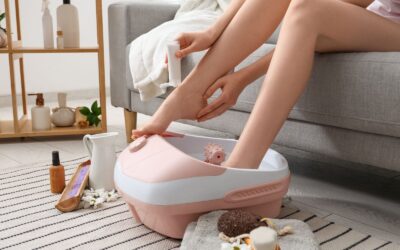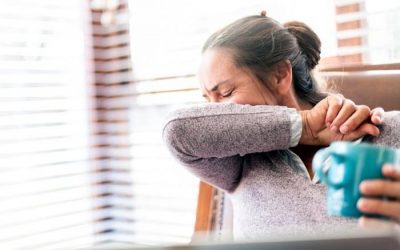While avoiding sunburns is always the best idea, sometimes we still get burned during the heat of the summer. Whether your sunburn is minor or severe, there are several things you can do to ease the pain and discomfort, as well as to get yourself on the road to feeling better.
Embrace the Shade
If you think you’re burning or if you already have a sunburn, stay out of the sun and embrace the shade! If you absolutely have to be in the sun, wear a long-sleeve shirt, long pants, and a hat, and lather on the sunscreen. Sunburn relief is going to be harder to come by when your already burned skin gets even more burned.
If you do need to be in the sun, or want to soak up some warmth, there are precautions you can take to protect yourself! Sunscreen is always important- an SPF of 30 or higher that is water-resistant will be the best bet. Your sunscreen should be reapplied every 2 hours, especially if you have been swimming or sweating, as even waterproof varieties can be lost over time. For each application, don’t be afraid to use too much- the typical adult takes about 1 oz of sunscreen (or a shot glass) to fully cover their exposed skin. Don’t forget areas like your lips, scalp, ears, neck, and the tops of your feet. These areas are easily forgotten and have thin skin that can be easily damaged.
In addition to sunscreen, some people will choose to wear clothing that offers ultraviolet protection (or UPF). A wide-brimmed hat and sunglasses with built-in UV protection can also be helpful.
The peak hours of sunlight are usually between 10 AM and 4 PM, however, any sun can be damaging. Whenever you leave the house, it is a good idea to carry sunscreen and sunglasses with you as preventative measures.
Preventing Sunburn in Children
Children are no different from adults when it comes to their risk for sunburn and need to take precautions. It is important to begin teaching children good habits when it comes to sun exposure so that they can carry them throughout their life, and because children typically spend a lot of time outdoors. If they begin to develop sunburns often in childhood, they will often be at a greater risk for skin cancer in later years. Sun exposure over time can also lead to wrinkles and sunspots, even when exposure is at a young age.
Newborns under 6 months old are typically kept out of direct sunlight as a best practice – only if this is impossible is it recommended to use sunscreen on a child this age. As the child grows, they will be able to use the same methods of prevention as adults. Most children will need help applying their sunscreen and to be reminded when a reapplication is necessary. Timing their sunscreen applications with your own can set a good example by showing children that even adults need sun protection!
Recognizing Too Much Sun Exposure
Even with all the proper precautions, spending too much time in the sun is possible. Not only can overexposure to the sun result in painful sunburns, but it can also lead to heatstroke or other issues. As you enjoy your time sunbathing, there are some warning signs that will tell you it may be time for a break.
Skin typically takes hours to show signs of sunburn, meaning you can’t rely on your skin’s tone to know when it’s time to pack up. However, if skin does begin to appear red or tanned, this is a sure sign that the sun has had too much contact with your skin. Peeling skin also usually appears later, but when you notice it, indicates too much exposure.
The sun also depletes our natural fluids, so you may notice you’re lightheaded, dizzy, or nauseous- all signs of dehydration. Sipping some water and relaxing in the shade can help you replenish this hydration and stay out of the draining sun. You may also notice the skin appears tight, wrinkled, or dry, which is a sign it is dehydrated as well.
Any unusual sensations such as a “pins and needles” feeling, muscle soreness, rashes, or fatigue can also be signs of heatstroke and that it is time to leave the sunshine behind. Even those who use sunscreen and other protective gear can be at risk of overexposure and dangerous side effects.
Utilize At-Home Remedies
There are several opinions about the best remedy for sunburn, and if you’re experiencing discomfort, just start working your way down the list to find the best sunburn relief for you.
- Aloe Vera – Whether from a bottle purchased from the store or directly from an Aloe Vera plant, this is great for both sunburn itch relief and pain relief.
- Honey – This is a little messier, but honey naturally helps the skin retain moisture, leading to less dryness in the skin and ultimately, sunburn pain relief. Spread it on, let it sit, then rinse with cold water.
- Yogurt – Another messier option, plain yogurt with live cultures will bring immediately cooling power and serious sunburn relief. Spread it on the burn and let it sit for about 20 minutes before rinsing.
- Cold Compress – While this may not bring about long-term sunburn pain relief, it will provide quite possibly the best sunburn relief in the short-term. A cold compress will cool the skin instantly, bringing about immediate sunburn itch relief and pain relief.
Once the worst of the sunburn has passed, you may notice your skin beginning to peel. This is a sign that the body is trying to shed damaged cells. When you notice peeling beginning, continue the same treatments used above, and make sure to moisturize skin. Keeping the skin hydrated will allow it to peel faster. Avoid peeling off this skin manually or with any exfoliation tools, instead of letting it come off naturally.
The period after a sunburn is a time when your skin is particularly sensitive to UV rays, so make sure to wear protective clothing and avoid direct exposure while the sunburn heals. When properly cared for, most sunburns should be healed within about 7 days. In more severe burns, swelling and blisters may occur and extend the time it takes your skin to heal from the damage.
Most sunburns will heal on their own with proper care. However, if you notice that your sunburn is accompanied by fever, feeling faint, extreme thirst, nausea, or signs of infection, you should contact a doctor immediately.
Prevent Sunburns from Reoccurring
If you’ve already had a sunburn this summer or if you’re simply trying to avoid the unnecessary pain of a sunburn, do whatever you can to prevent sunburns from reoccurring. This includes the suggestions above, such as staying in the shade, wearing clothes that cover the skin, and wearing hats. But you should also avoid peak hours (10 AM until 4 PM), seek shade throughout the day as you take a break from the sun, protect your eyes with UVA and UVB sunglasses, and wear an SPF lip balm to protect your lips as well. Be sure to apply a high-SPF sunscreen liberally and regularly.
If your sunburn isn’t getting better or you think you may need medical attention, get in touch with us at TrueCare. We can provide sunburn pain relief and treatment, as well as confirm that no additional medical attention is required. Find the TrueCare location nearest to you or get in touch with us now to schedule an appointment or have your sunburn relief questions answered.





